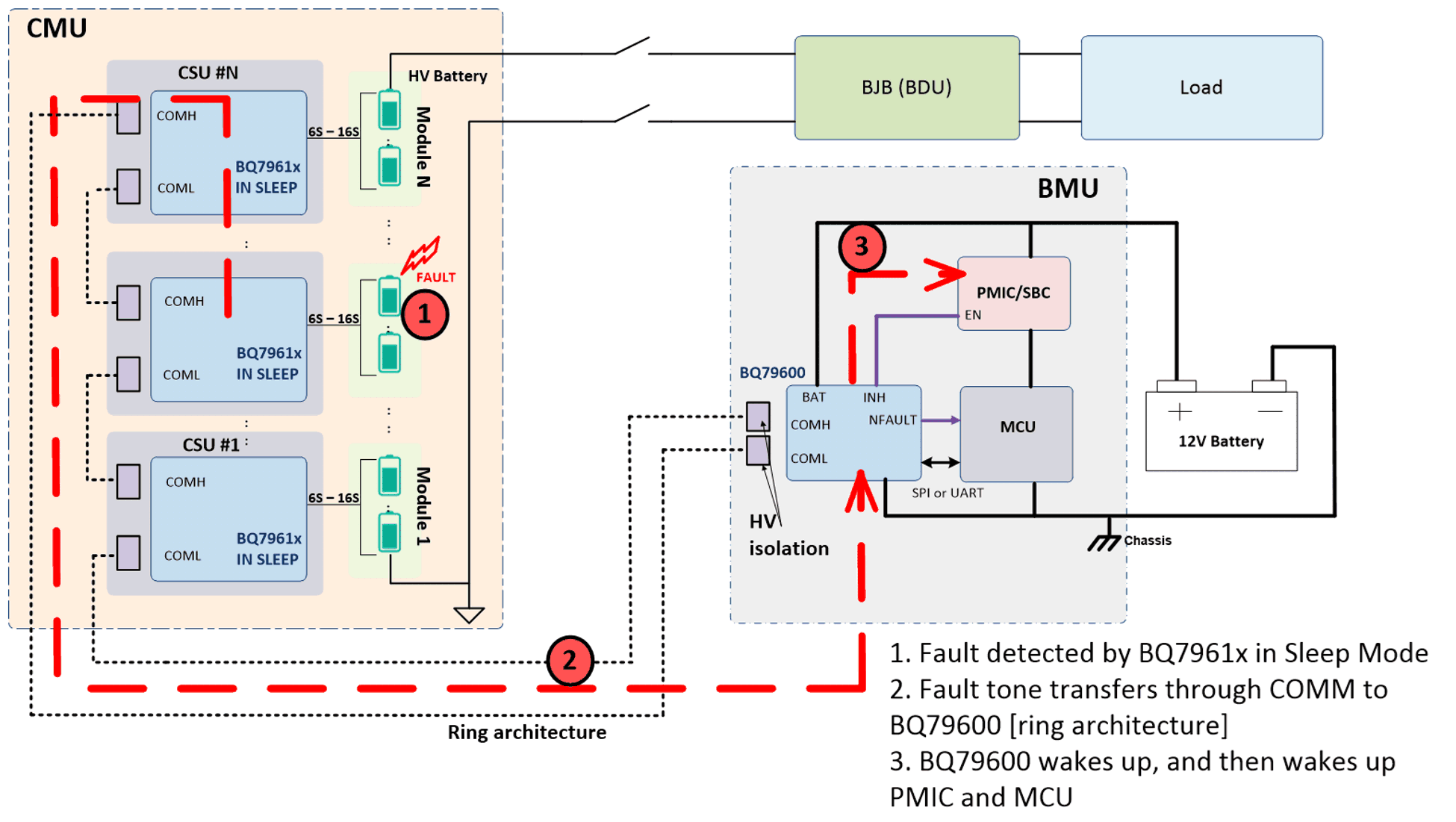SLYY231A March 2024 – March 2024 BQ25171-Q1 , BQ25622 , BQ25638 , LMQ66430-Q1 , LMR36502 , TPS37-Q1 , TPS62903-Q1 , TPSM365R15
- 1
- Overview
- At a glance
- The importance of nano-IQ in different power applications
- Achieving nano IQ in industrial BMS monitors
- Achieving nano IQ in automotive BMS monitors
- Achieving nano IQ in automotive BMS chargers
- Achieving nano IQ in voltage supervisors
- Achieving nano IQ in industrial and personal electronics DC/DC converters
- Achieving nano IQ in automotive DC/DC converters
- Conclusion
- References
- Additional resources
Achieving nano IQ in automotive BMS monitors
The battery control unit (BCU) generally has the BMS’s primary MCU on it and is powered by a 12V battery. The MCU cannot run off of 12V, so there will be a DC/DC converter or power-management integrated circuit on the board to generate its power supply. The BMS bridge device that translates Serial Peripheral Interface/Universal Asynchronous Receiver Transmitter communication protocols from the MCU to the isolated daisy chain for the cell monitors is also on the BCU.
The 12V battery charges while a vehicle is motion, so the current consumption from the 12V rail is less important. When the car is parked and not charging, the high-voltage contactors are open, so the >400V battery is disconnected from the system and cannot charge the 12V battery. Despite this, the 12V battery must still supply the BCU and other always-on features (such as key fob locking or unlocking) for unknown periods of time. Low power consumption is important for these types of always-on devices.
Typically, original equipment manufacturers (OEMs) do not want to draw more than 100µA average current from the 12V battery for all of the always-on features. Turning off the BCU completely would minimize BMS power consumption, but would leave the system unable to react if a cell became damaged and dangerous. Instead, OEMs put the MCU into an extremely low power state and rely on the bridge device’s reverse wakeup capability. This feature, as shown in Figure 1, allows the cell monitors to alert the bridge device if a critical fault occurs, and the bridge device in turn wakes the MCU so that it can respond to the fault.
 Figure 1 Reverse wakeup.
Figure 1 Reverse wakeup.The lower the power consumption of the bridge device, the longer the car can stay parked and its batteries safely monitored without completely draining the 12V battery. The current consumption of the TI BQ79600 is <7µA in sleep mode, which reduces the risk of the 12V battery fully discharging.